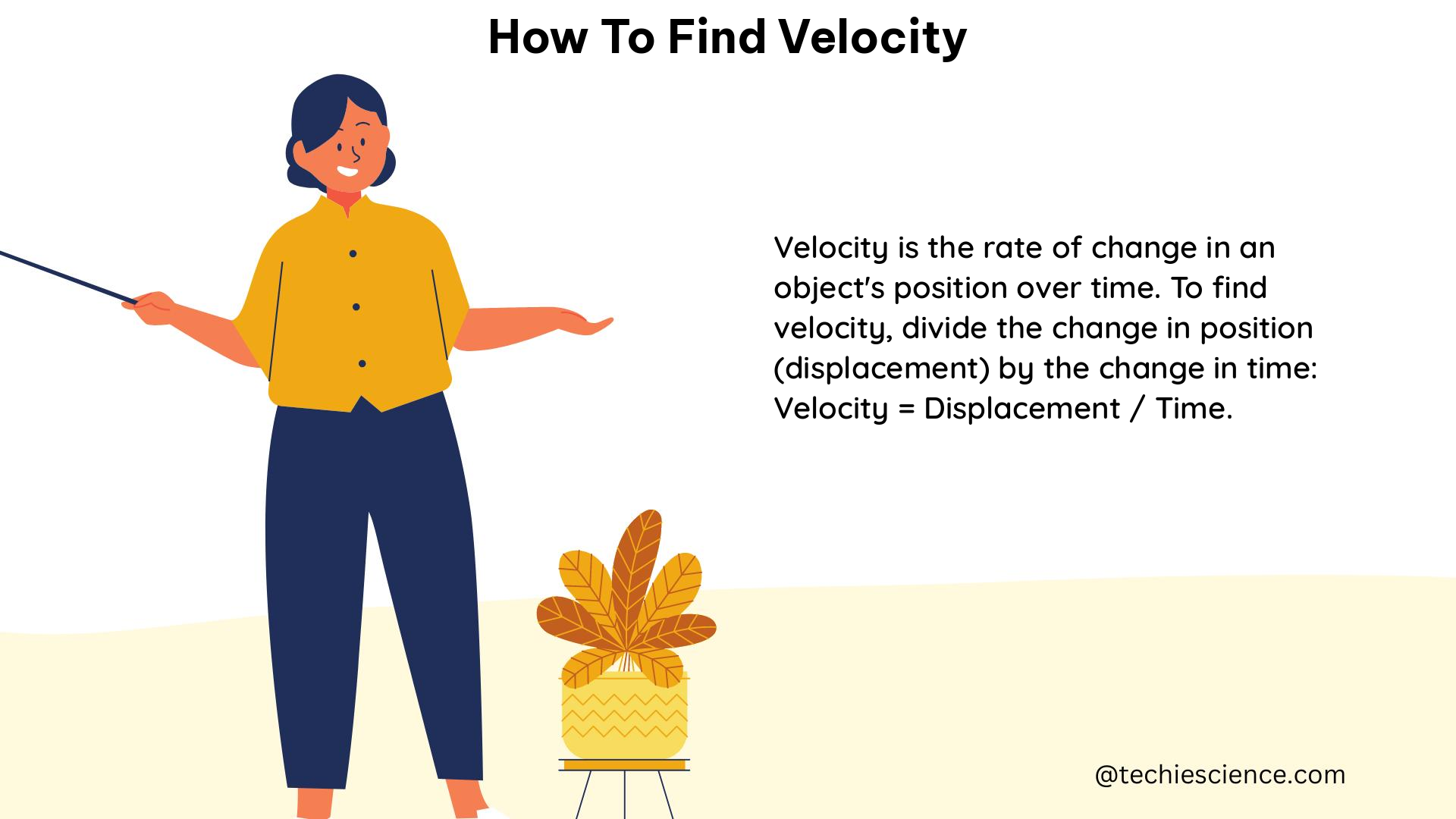Summary
Velocity is a fundamental concept in physics that describes the rate of change in an object’s position over time. This comprehensive guide will provide you with a deep understanding of the various methods and formulas used to calculate velocity, including examples and numerical problems to help you master the topic.
Understanding Velocity

Velocity is a vector quantity, meaning it has both magnitude (speed) and direction. The formula for calculating velocity is:
Velocity = Displacement / Time
Where:
– Velocity is measured in meters per second (m/s)
– Displacement is the change in position, measured in meters (m)
– Time is the interval over which the displacement occurs, measured in seconds (s)
This formula can be used to find the average velocity of an object moving in a straight line at a constant rate.
Constant Acceleration
When an object is accelerating at a constant rate, the formula for average velocity becomes:
Average Velocity = (Final Velocity - Initial Velocity) / 2
This formula can be used to find the average velocity of an object over a given time interval, as long as the acceleration is constant.
For example, if a train accelerates from 30 m/s to 80 m/s over a period of 10 seconds, the average velocity would be:
Average Velocity = (80 m/s - 30 m/s) / 2 = 25 m/s
Circular Motion
If an object is moving in a circular path, the formula for velocity is:
Velocity = Circumference of the Circle / Time
This formula can be used to find the velocity of an object moving in a circular path at a constant rate.
For instance, if a car is moving in a circular path with a diameter of 50 meters at a constant rate of 10 m/s, the velocity of the car would be:
Circumference of the Circle = π × Diameter = π × 50 m = 157 m
Velocity = Circumference / Time = 157 m / 10 s = 15.7 m/s
Other Methods for Finding Velocity
In addition to the formulas mentioned above, there are other methods for finding velocity, such as using data tables and graphs to calculate average speed and determine when an object moved the fastest. These methods can be useful for solving more complex velocity problems.
Using Data Tables
To find velocity using a data table, you can follow these steps:
- Identify the relevant data points in the table, such as the object’s position and the corresponding time.
- Calculate the displacement between each pair of data points.
- Divide the displacement by the time interval to find the average velocity between each pair of data points.
- Analyze the data to determine the overall trend in velocity and identify any significant changes.
Using Graphs
Graphs can also be used to visualize and analyze velocity data. Here’s how you can use graphs to find velocity:
- Identify the type of graph, such as a position-time graph or a velocity-time graph.
- Determine the slope of the graph, which represents the velocity of the object.
- For a position-time graph, the slope represents the average velocity.
- For a velocity-time graph, the slope represents the acceleration.
- Use the slope formula to calculate the velocity:
Velocity = (Change in Position) / (Change in Time) - Analyze the graph to identify any changes in velocity or acceleration over time.
Numerical Problems
Here are some numerical problems to help you practice finding velocity:
- A car travels a distance of 120 meters in 10 seconds. What is the car’s average velocity?
Velocity = Displacement / Time
Velocity = 120 m / 10 s = 12 m/s
- A ball is thrown upward with an initial velocity of 20 m/s. After 2 seconds, the ball reaches its maximum height. What is the ball’s average velocity during this time?
Initial Velocity = 20 m/s
Final Velocity = 0 m/s (at the maximum height)
Time = 2 s
Average Velocity = (Final Velocity - Initial Velocity) / 2
Average Velocity = (0 m/s - 20 m/s) / 2 = -10 m/s
- A cyclist is riding in a circular path with a diameter of 100 meters. If the cyclist completes one full revolution in 20 seconds, what is the cyclist’s velocity?
Circumference of the Circle = π × Diameter = π × 100 m = 314.16 m
Velocity = Circumference / Time = 314.16 m / 20 s = 15.71 m/s
Conclusion
In this comprehensive guide, we have explored the various methods and formulas used to calculate velocity, including examples and numerical problems. By understanding the concepts of velocity, constant acceleration, and circular motion, you can now confidently solve a wide range of velocity-related problems in physics.
References
- Ways to Calculate Velocity – wikiHow
- Kinetic Energy and Velocity Lab – Arbor Scientific
- Calculating Speed and Velocity From a data table – YouTube

The lambdageeks.com Core SME Team is a group of experienced subject matter experts from diverse scientific and technical fields including Physics, Chemistry, Technology,Electronics & Electrical Engineering, Automotive, Mechanical Engineering. Our team collaborates to create high-quality, well-researched articles on a wide range of science and technology topics for the lambdageeks.com website.
All Our Senior SME are having more than 7 Years of experience in the respective fields . They are either Working Industry Professionals or assocaited With different Universities. Refer Our Authors Page to get to know About our Core SMEs.